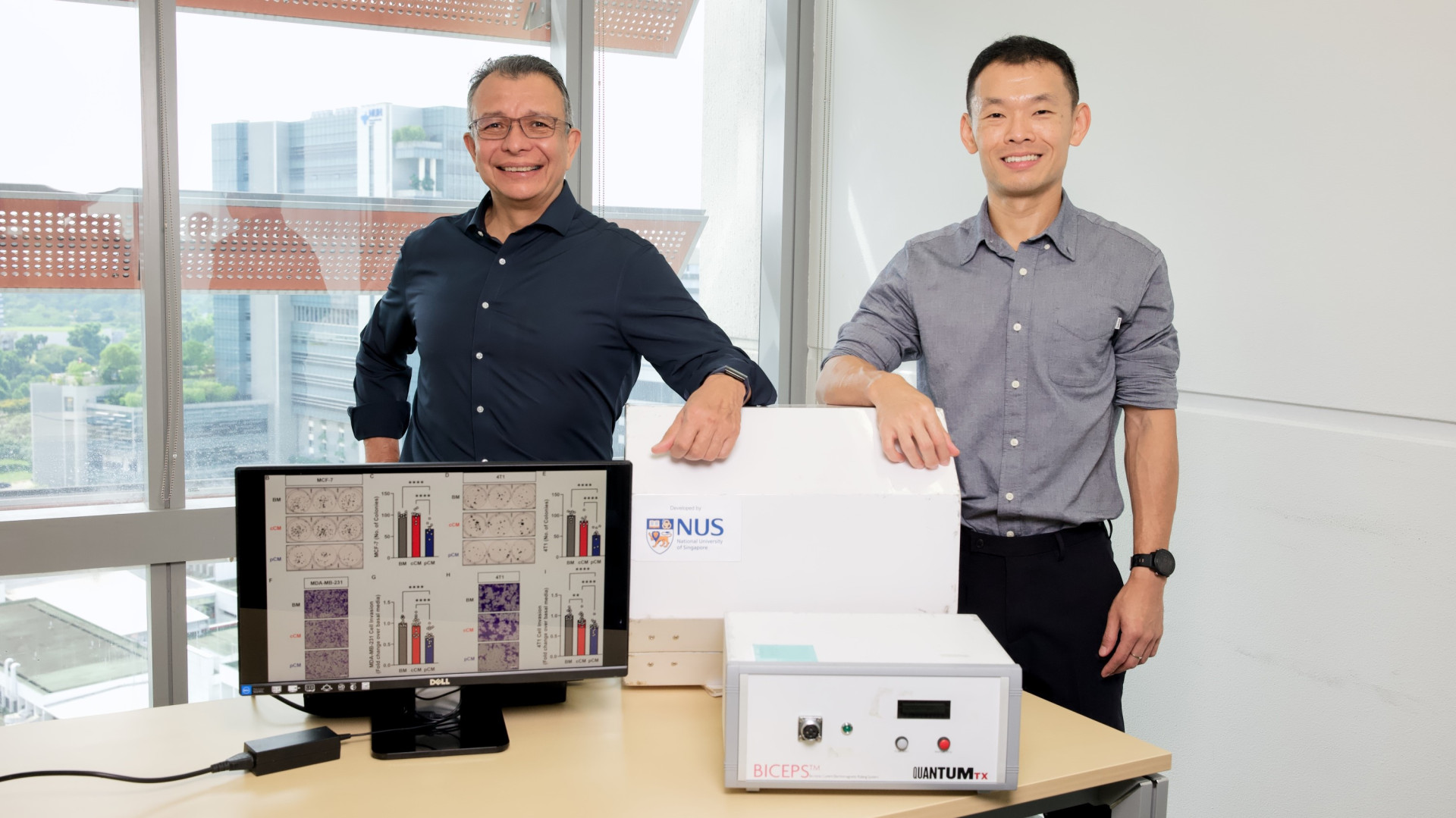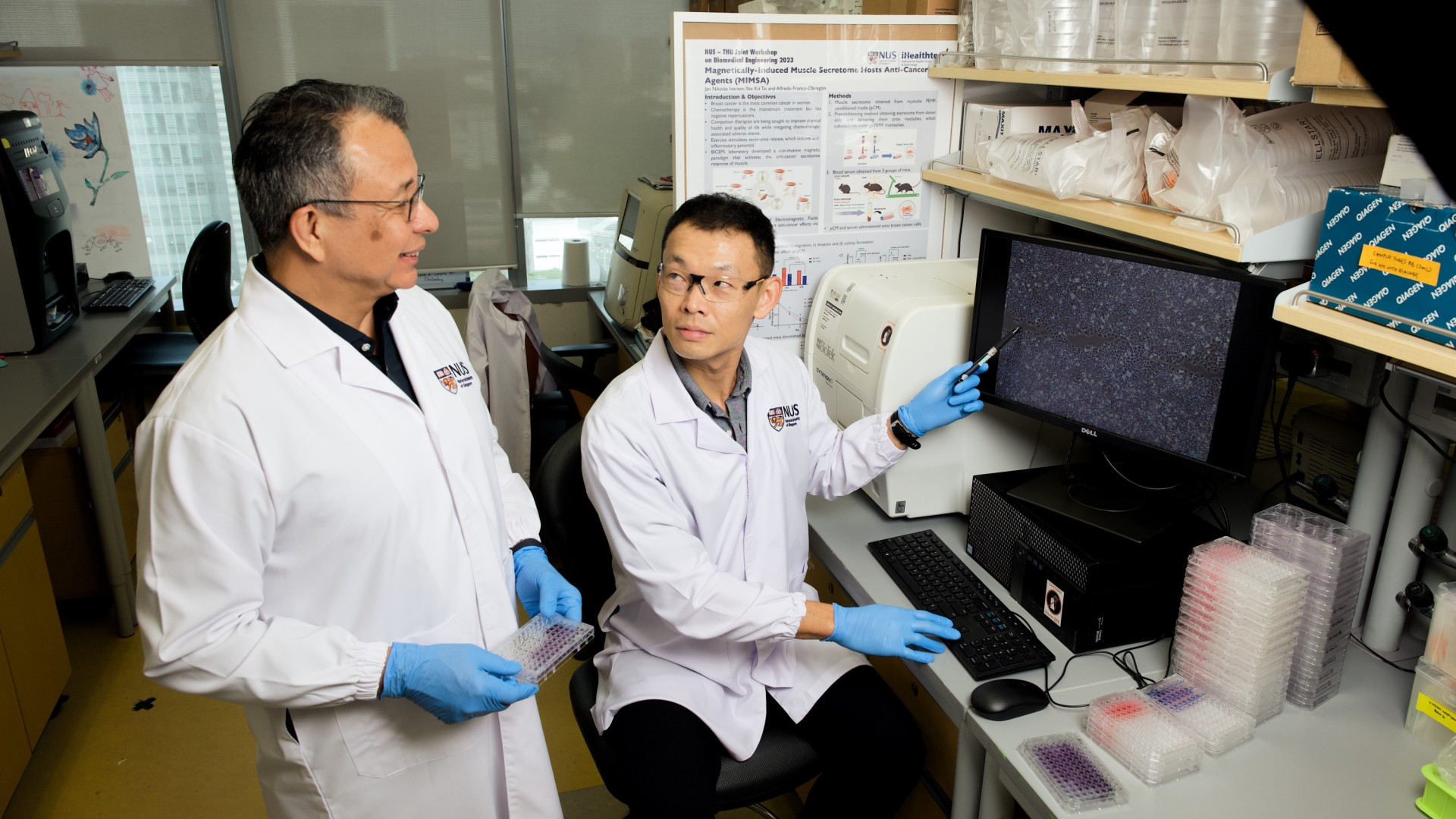SINGAPORE: Scientists at the National University of Singapore (NUS) have made a groundbreaking discovery in the fight against cancer. A team of researchers led by Associate Professor Alfredo Franco-Obregón from the NUS Institute for Health Innovation & Technology (iHealthtech) has unveiled a novel approach to stimulate muscle cells using brief and mild pulsed electromagnetic field exposure.
This innovative method activates the release of proteins with potent anticancer properties, which can circulate throughout the body, providing systemic protection against cancer.
Exercise is widely recognized for its protective effects against various cancers, including breast, prostate, and colon cancers, and it also improves the survival rates of cancer patients. However, many patients cannot exercise due to the debilitating effects of cancer and its treatments, limiting their ability to benefit from these protective effects. The BICEPS lab’s magnetic therapy method offers a promising alternative.
“The BICEPS lab’s method of stimulating muscle cells uses a form of magnetic therapy that exhibits key commonalities with exercise,” said Assoc Prof Franco-Obregón. “This latest study demonstrated that our non-invasive method of muscle stimulation mobilizes a similar anticancer defense as exercise, bringing us a step closer to developing drug-free therapeutics. This could help patients who are unable to exercise benefit from the anticancer agents stimulated by exercise.”
Published in the journal *Cells* on March 5, 2024, the study detailed how the NUS team demonstrated that exposing isolated muscle cells to 10 minutes of low-energy magnetic fields boosts muscle development by stimulating the release of regenerative and rejuvenating proteins. These proteins, in turn, offer protection against diseases such as diabetes and cancer.
In the new study, the researchers investigated whether the same magnetic stimulation protocol could trigger the production and release of anticancer agents from intact muscles in preclinical models. They tested this hypothesis at the cellular level and found that magnetically stimulated muscle cells could inhibit the growth, invasion, and migration of breast cancer cells, key markers of cancer progression. Additionally, these cells were able to shrink micro-tumors and reduce their blood vessel formation.


The NUS team validated these findings in preclinical studies. They demonstrated that a 10-minute exposure to magnetic therapy once a week for eight weeks evoked anticancer properties similar to those produced by exercising twice a week for 20 minutes per session over the same period.
Significantly, the researchers identified HTRA1, a tumor suppressor, as a key player. Muscle cells exposed to 10 minutes of magnetic fields weekly secreted HTRA1, mimicking the effects of exercise. Removing HTRA1 from these muscle cells eliminated their anticancer effects, while applying synthetic HTRA1 directly to cancer cells recreated the beneficial effects of magnetic field exposure and exercise.
“HTRA1 is necessary for muscle development and building its anticancer protein arsenal,” Assoc Prof Franco-Obregón explained. “HTRA1 released during exercise may cause muscles to adapt to secrete HTRA1 even at rest, helping to explain why exercise makes us more resistant to cancer. If muscle is our anticancer pharmacy, magnetic field therapy may be an inexpensive, yet effective, prescription.”
Following the promising results from this preclinical study, the NUS team is initiating clinical trials to assess the anticancer potential of muscle-targeted magnetic therapy in humans. They aim to corroborate the anticancer effects of HTRA1 in individuals with breast and other cancers.
The researchers also plan to identify other anticancer biomarkers produced by muscle cells, which could become targets for developing new drugs and therapeutics to treat cancer. Given the role muscles play in rejuvenation and disease prevention, this approach holds significant potential for future cancer treatments.
TISG/

